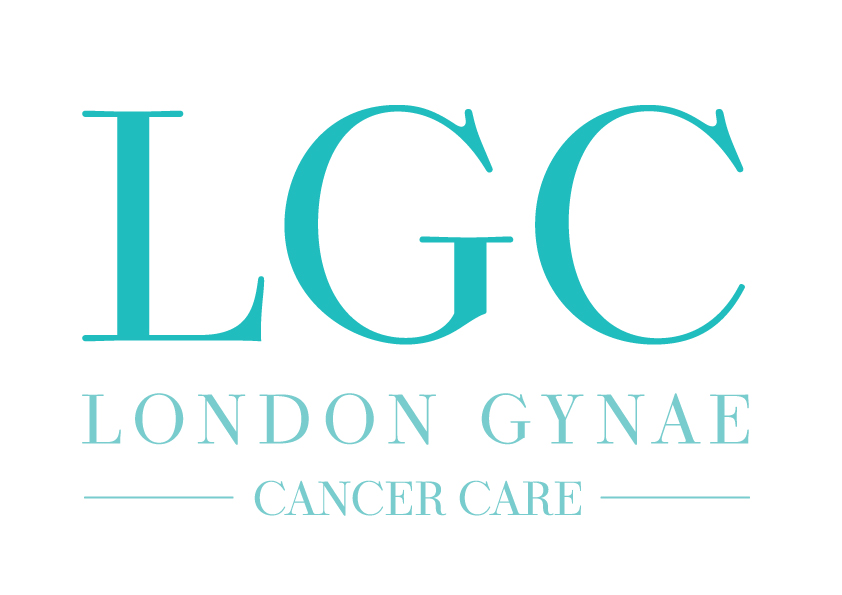Ovarian cancer
The name ovarian cancer describes a number of different forms of cancer that arise in different tissues of the ovary. The most common form of ovarian cancer, accounting for more than nine out of ten cases, originates in the cells forming the outer lining of the ovary: this is known as epithelial ovarian cancer. Other, less common, types arise from the central structural tissue of the ovary (stromal tumours) or the eggs (germ cell tumours).
In many cases of epithelial ovarian cancer, the first abnormalities actually occur in the fallopian tubes and subsequently spread to the lining of the ovary, leading to the development of cancer.
Very rarely, cancer may develop in the peritoneum, the thin layer of tissue that covers the inside of the abdomen: this is known as primary peritoneal cancer (PPC). This lining develops from the same cells in the embryo as the surface of the ovary, and so PPCs are very similar to epithelial ovarian cancers (and are treated in the same way). Indeed, up to 15% of women with advanced ovarian cancer may actually have PPC.
How common is ovarian cancer?
Ovarian cancer is the 15th most common form of cancer in the UK, accounting for about 2% of all new cancer cases. It is the 6th most common form of cancer in women. In 2014, there were about 7400 new cases of ovarian cancer in the UK. Slightly more than half of all new cases occur in women aged 65 and over, with the highest rates being seen in women aged between 75 and 79. Overall, about 1 in 52 women will be diagnosed with ovarian cancer during their lifetime.

What are the risk factors?
Although the causes of ovarian cancer are not fully understood, we do know that a variety of risk factors are involved. About one fifth of cases each year are linked to major lifestyle and other risk factors, and thus are potentially preventable. Among non-lifestyle risk factors, perhaps the most important are older age and inherited (genetic) conditions.
Overall, about 3 in every 100 ovarian cancer cases occur in women with a family history of ovarian cancer, which suggests that inherited factors play an important role in determining the risk of the disease. The most important genes that affect the risk of ovarian cancer (and also the risk of breast cancer) are called BRCA1 and BRCA2. Compared with women without harmful changes (mutations) in these genes, the risk of ovarian cancer is about two thirds higher in women with mutations in BRCA1, and one third higher in those with mutations in BRCA2. However, even in women without such mutations, the risk is higher in those with a family history of ovarian or breast cancer, or certain other cancers such as stomach, liver or prostate cancer. Overall, about 5–15% of ovarian cancer cases each year are linked to genetic factors.
Another important factor affecting the risk of ovarian cancer is the use of some forms of hormone replacement therapy (HRT). The risk of ovarian cancer is higher in women using combined HRT rather than oestrogen-only HRT. Overall, it is estimated that about 1% of ovarian cancer cases in the UK are attributable to the use of HRT.
In addition to HRT use, a number of environmental factors , notably smoking, obesity and exposure to asbestos, can increase the risk of ovarian cancer. The use of talc powder in the genital area may also increase the risk.
By contrast, the use of oral contraceptives has been shown to reduce the risk of ovarian cancer. The risk is 25–28% lower in current or past users than in women who have never used oral contraceptives. The longer the duration of use, the greater the decrease in risk: women who have used oral contraceptives for 10 years or more are about half as likely to develop ovarian cancer as those who have never used them. Moreover, this reduction in risk persists for up to 30 years after the last use of oral contraceptives. It has been estimated that about 9% more ovarian cancer cases would occur in the UK each year in the absence of oral contraceptive use.
Breast feeding has also been shown to decrease the risk of ovarian cancer. The risk is reduced by about a quarter in women who have breast-fed, compared with those who have never done so, and the size of the reduction increases with duration of breast-feeding. Overall, it is estimated that almost 1 in 5 ovarian cancer cases in the UK are linked to women breast-feeding their infants for less than 6 months.
How is ovarian cancer diagnosed?
Ovarian cancer is usually diagnosed on the basis of symptoms, blood tests and ultrasound scans.
The symptoms of ovarian cancer are vague, and are more usually caused by other conditions. Depending on the stage of the cancer, these may include:
- pain in the abdomen (tummy)
- a feeling of bloating or fullness in the abdomen
- irregular periods, or bleeding from the vagina after the menopause
- back pain
- passing urine more often than usual
- a feeling of fullness or loss of appetite
- constipation
- a swollen abdomen
- pain during sex
- nausea or sickness
- severe tiredness
- shortness of breath.
Although these symptoms do not usually indicate cancer, they should be checked as soon as possible, particularly if they are new, severe, or continuous (occurring on most days for 3 weeks or more). This is particularly important for women who are over 50 years of age, or have a strong family history of ovarian or breast cancer.
Blood tests may be used to check your general health or to measure a protein called CA125, which is produced by ovarian tumours. Levels of this protein are increased in about half of all women with early-stage ovarian cancer, and in about 9 out of 10 of those with more advanced disease. However, CA125 may also be increased in women with some non-cancerous conditions of the ovaries and womb, including endometriosis, fibroids or pelvic inflammatory disease.
An ultrasound scan may be performed to examine the ovaries. In this test, a scanner projects sound waves which bounce off the organs in the body and are picked up by a microphone incorporated in the scanner, which converts them into an image on a screen. The probe may be rubbed over the skin of the abdomen (abdominal ultrasound) or inserted into the vagina (transvaginal ultrasound). Both abdominal ultrasound and transvaginal ultrasound can show whether the ovaries appear normal and whether any ovarian cysts are present; transvaginal ultrasound can help to show whether any cysts have solid areas that are more likely to be cancer. An abdominal ultrasound scan usually takes about 45 minutes, whereas a transvaginal scan is quicker (about 15 minutes). Ultrasound scanning is painless, although a transvaginal scan may be slightly uncomfortable.
If cancer is diagnosed, further tests – called staging tests – are carried out to determine how large the cancer is, and whether it has spread to other organs. These tests may include imaging tests such as a CT scan or MRI scan. In some patients with advanced disease it may be necessary to investigate further by collecting a sample of the tumour (a biopsy) or a sample of fluid from inside the abdomen. In other cases, a surgical examination of the organs in the abdomen (a laparotomy) is usually recommended.
If you are receiving treatment for ovarian cancer, these tests may also be carried out to measure how well the treatment is working.

How is ovarian cancer treated?
The treatment of ovarian cancer will depend on a number of factors, including how large the tumour is and whether it has spread to other organs, the type of cancer, and the patient’s general health and level of fitness. Advances in treatment over the last two decades have led to marked improvements in survival rates. Today, almost half of all women diagnosed with ovarian cancer in England and Wales will survive for 5 years or more, while more than a third will survive for 10 years or more.
Ovarian cancer treatment may involve surgery, chemotherapy or – in rare circumstances – radiotherapy. Your doctors will discuss the different options with you, to help you make the right choice for you.
Almost all women with ovarian cancer will need some form of surgical treatment, and this may be all that is needed in women with early-stage disease that has not spread beyond the ovary. For very early-stage cancer (referred to as a low-grade cancer), it may be sufficient to remove the affected ovary and its fallopian tube, and to sample the regional lymph nodes, the omentum (a large flap of the peritoneum that hangs down from the stomach) and peritoneal tissue. In most cases, however, the surgeon is likely to recommend removal of both ovaries, fallopian tubes and the womb, in addition to sampling the lymph nodes, removing the omentum and taking biopsies from the peritoneum. During surgery, the surgeon will take biopsies from various areas of the abdomen to check for cancer cells. If there is a high risk of the cancer returning, chemotherapy may be recommended after surgery to kill any new cancer cells. This is known as adjuvant chemotherapy.
For advanced cancers that have spread beyond the ovary, treatment may include surgery and chemotherapy, depending on the number, size and location of secondary tumours, previous treatment received, the patient’s general health, and the patient’s wishes. Surgical treatment is aimed at removing as much cancerous tissue as possible before adjuvant chemotherapy. In some cases, however, it may be necessary to use chemotherapy before surgery to reduce the amount of tumour present: this is known as neoadjuvant chemotherapy.
The most widely used chemotherapy drug in women with ovarian cancer is carboplatin, which may be used alone or with another drug, called paclitaxel. Other drugs may be used if the cancer comes back within a year after chemotherapy. In women with bulky residual disease following surgery another drug, called Avastin, may be offered. Women with BRCA1 or BRCA2 may be offered a drug called olaparib if chemotherapy is no longer working.


